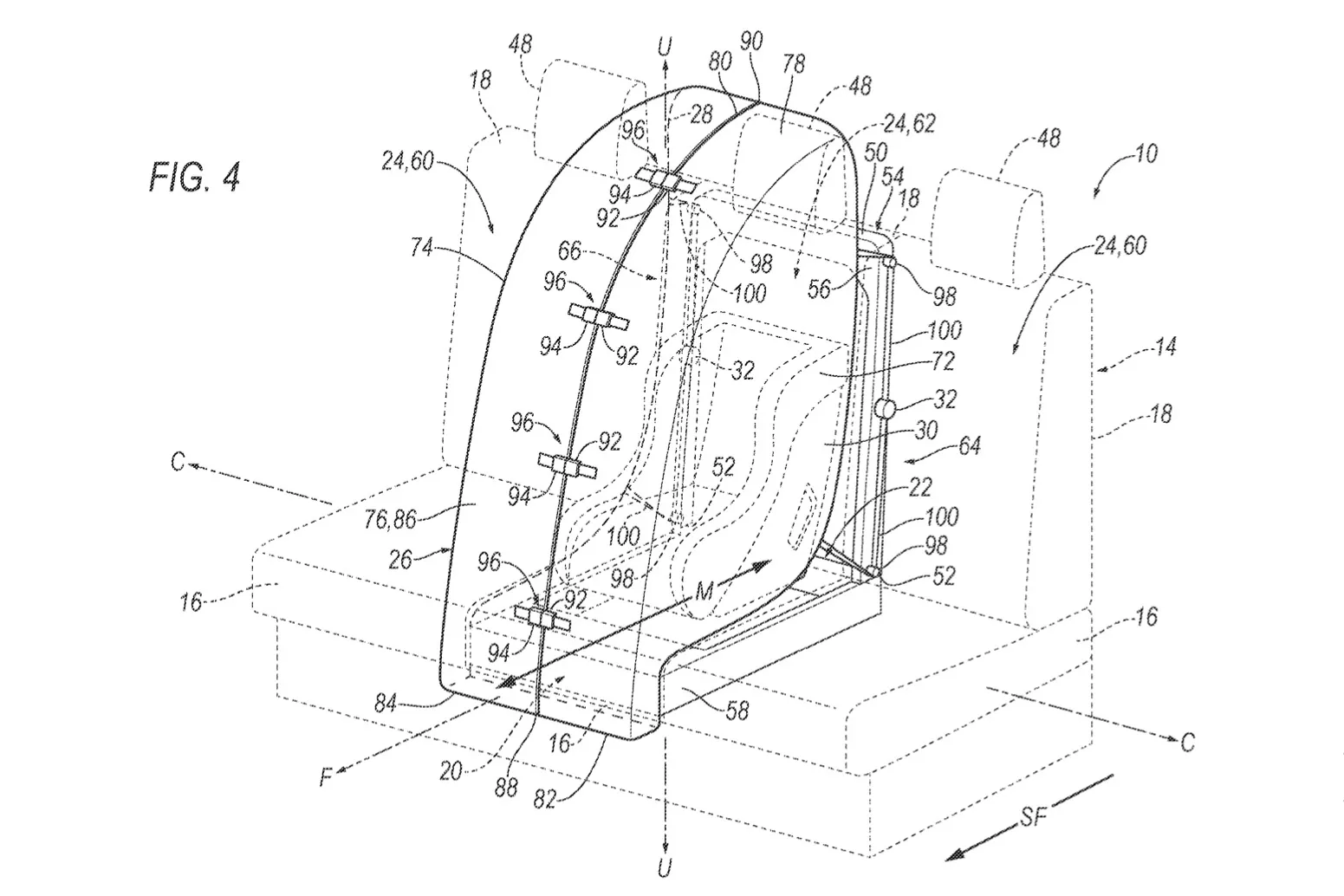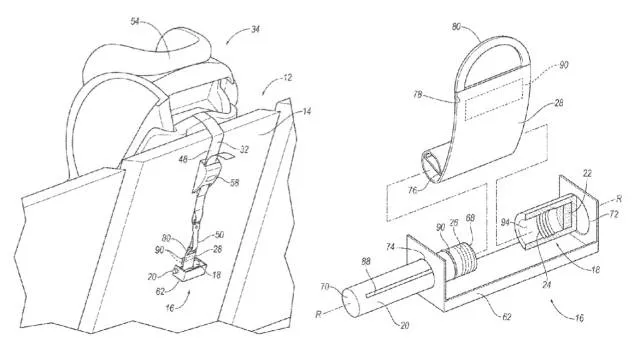
Ford developing an airbag to accommodate car seats
- by admin
- Posted on July 2, 2024
A pair of recently surfaced Ford patent filings deal with ways to make car seats safer, including better integration with airbags.
The first patent filing, which was published by the United States Patent and Trademark Office (USPTO) June 18, 2024, after being filed by Ford on May 26, 2023, describes an airbag designed specifically to protect children in car seats. The seating position alone may not be a guarantee of safety, as even family-oriented vehicles like minivans don’t always provide the expected level of rear-seat protection.
As described in the application, the airbag would deploy from the forward edge of the bottom of the main seat to which the car seat is attached. The airbag would incorporate a cavity that would allow it to envelope the car seat when deployed. Inflation would be via pyrotechnic charge, just like conventional airbags.
Ford car seat airbag system patent image
Accompanying drawings show a forward-facing car seat, but Ford notes in the text that seats could be rear-facing as well, accommodating a wider range of ages. All children under the age of one should ride in rear-facing car seats, and it’s best to use a rear-facing car seat as long as possible, until the child reaches the top height or weight limit allowed by the manufacturer of the car seat.
Seating positions designed to accommodate car seats are equipped with standardized Lower Anchors and Tethers for Children (LATCH) hardware, something Ford aims to supplement with a design detailed in a second patent application. This one, published by the USPTO the same day as the airbag patent application but filed by Ford on July 14, 2022, deals with an energy-absorbing system.

Ford car seat energy absorption system patent image
Instead of tethering the car seat directly to an anchor point, straps would connect to an energy absorber, which in turn would be connected to an anchor point. The energy absorber would essentially be a cylindrical full of compressible liquid, similar to suspension shock absorbers. The compression of that fluid would, as the name states, absorb energy transmitted from the vehicle and prevent it from reaching the car seat.
The 2024 Toyota Tacoma TRD Pro features shock absorbers in its front seat backs for off-road driving, but Ford’s energy absorber will likely be the first manufacturer application of this idea for car seats, should it reach production. Like all patented ideas, neither this nor the car-seat airbag system are guaranteed to advance beyond the paperwork stage.
A pair of recently surfaced Ford patent filings deal with ways to make car seats safer, including better integration with airbags. The first patent filing, which was published by the United States Patent and Trademark Office (USPTO) June 18, 2024, after being filed by Ford on May 26, 2023, describes an airbag designed specifically to…
